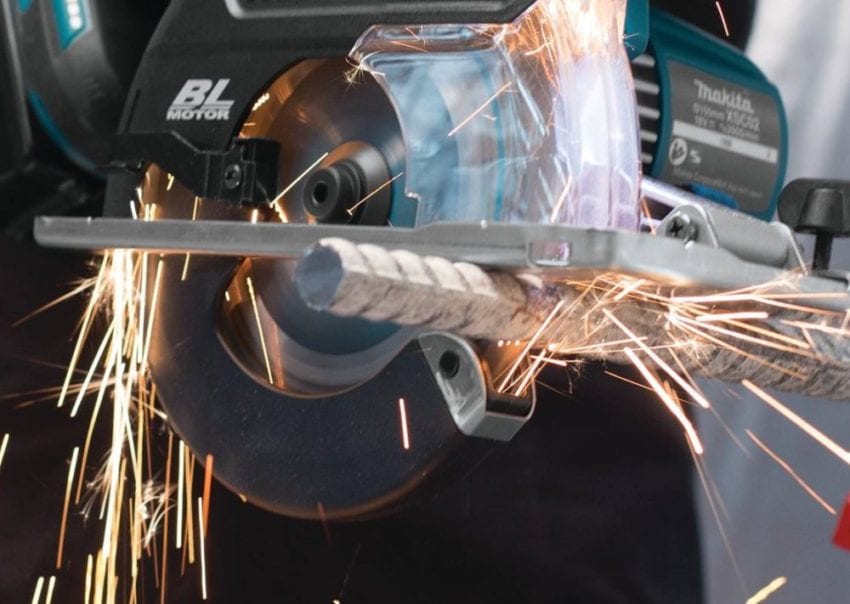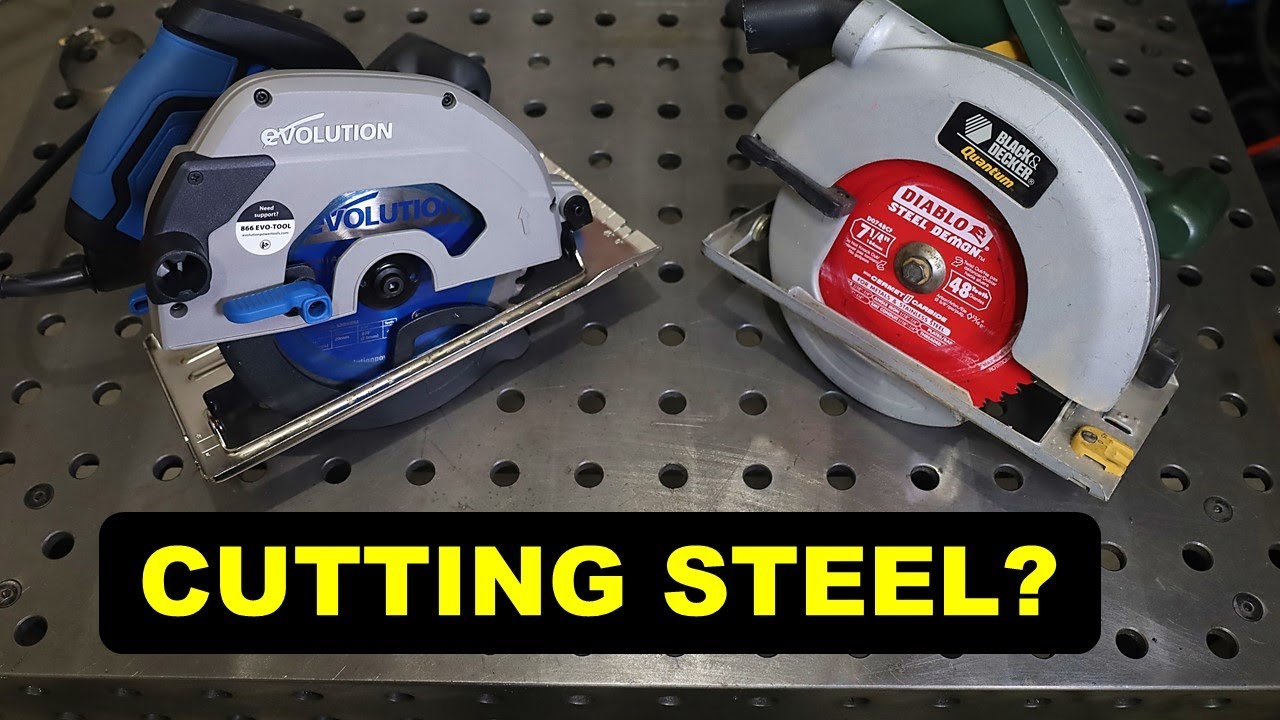Wondering if you can use a circular saw to cut metal? Well, you’ve come to the right place! Let’s dive in and explore the possibilities of using this handy tool for metal cutting.
You might be thinking, “Wait a minute, isn’t a circular saw mainly used for wood?” Well, you’re partially correct, but the versatility of a circular saw might surprise you. While it is primarily designed for woodcutting, with the right blade and precautions, it can be used to cut through metal as well.
Before we get into the nitty-gritty of using a circular saw for metal cutting, let’s talk about safety first. It’s crucial to understand the risks involved and take the necessary precautions to ensure a safe cutting experience. So, let’s buckle up and delve into the world of circular saws and metal cutting!
Looking to cut metal with a circular saw? While it is possible, it’s important to proceed with caution and take necessary safety measures. Here’s a brief overview of how to use a circular saw to cut metal:
- Choose the right blade for metal cutting.
- Secure the workpiece to prevent movement.
- Use clamps or a vise to hold the metal firmly.
- Adjust the saw’s cutting depth.
- Keep a steady hand and guide the saw slowly.
Remember, practice safety and use proper protective gear when cutting metal with a circular saw.

Can I Use a Circular Saw to Cut Metal?
When it comes to cutting metal, many DIY enthusiasts wonder if they can use a circular saw for the task. Circular saws are commonly used for cutting wood, but can they effectively cut through metal? In this article, we will explore the capabilities of a circular saw when it comes to cutting metal, providing you with all the information you need to make an informed decision.
Using a Circular Saw for Metal Cutting: What You Need to Know
Before diving into the specifics of using a circular saw to cut metal, let’s address the question: can it be done? The short answer is yes, you can use a circular saw to cut through metal, but there are certain considerations and precautions you need to take.
1. Blade Selection
When it comes to cutting metal with a circular saw, the right blade is of utmost importance. You cannot simply use the same blade you use for woodcutting. Metal-cutting blades, also known as metal-cutting discs or abrasive blades, are specifically designed for this purpose. These blades typically have a toothless edge with abrasive particles embedded in the disc material, allowing them to effectively cut through metal.
When choosing a metal-cutting blade for your circular saw, consider factors such as the type of metal you will be cutting, the thickness of the metal, and the speed and precision required. It’s important to select a blade that is appropriate for the job to ensure clean and efficient cuts.
2. Safety Precautions
Cutting metal with a circular saw poses potential safety risks, so it’s crucial to take the necessary precautions. Here are some safety measures you should follow:
- Wear appropriate protective gear, including safety glasses, gloves, and ear protection.
- Ensure the metal you are cutting is securely clamped or held in place to prevent it from moving during cutting.
- Set the cutting depth of the circular saw to just enough to cut through the metal, minimizing kickback and excessive sparks.
- Avoid using excessive force while cutting the metal. Let the saw do the work and guide it steadily through the metal.
- Before starting, inspect the saw and blade for any damage or wear. Replace any damaged parts before use.
- Make sure the work area is well-ventilated to minimize exposure to metal chippings and debris.
3. Technique and Tips
Using the right technique and following some useful tips can greatly improve your metal-cutting experience with a circular saw. Here are a few techniques and tips to consider:
- Mark the cutting line on the metal surface before starting to ensure accurate and straight cuts.
- Apply a cutting lubricant or coolant to the blade and the metal to reduce friction and heat buildup, prolonging the lifespan of the blade.
- Adjust the cutting speed of the saw based on the type and thickness of the metal. Cutting too fast can overheat the blade, while cutting too slow can result in poor quality cuts.
- Support the metal piece properly to prevent it from sagging or vibrating during cutting, which can lead to uneven cuts.
- Allow the blade to cool down periodically during prolonged cutting sessions to prevent overheating and blade damage.
4. Limitations and Alternatives
While a circular saw can be used for cutting metal, it does have some limitations. One limitation is the maximum cutting depth, which is typically less than what you can achieve with specialized metal-cutting tools like plasma cutters or reciprocating saws.
If you frequently work with metal or need to cut through thicker metal sheets, using a dedicated metal-cutting tool might be more efficient and yield better results. Tools like plasma cutters, metal chop saws, or angle grinders with a cutoff wheel are designed specifically for metal cutting tasks and can provide more precise and faster results.
Benefits of Using a Circular Saw for Cutting Metal
Although a circular saw may not be the most specialized tool for cutting metal, it does offer some advantages in certain situations. Here are a few benefits of using a circular saw for cutting metal:
- Versatility: Circular saws are versatile tools that can handle various cutting tasks, including metal cutting. If you already own a circular saw, using it for occasional metal cutting can save you the expense of purchasing a specialized tool.
- Portability: Circular saws are typically lightweight and portable, making them convenient for on-site or remote metal cutting tasks. They can be easily transported and set up in different locations.
- Cost-Effectiveness: Circular saws are generally more affordable than specialized metal-cutting tools, making them a budget-friendly option for occasional or DIY metal cutting projects.
Maintaining Safety and Efficiency While Cutting Metal
Regardless of the tool you choose for cutting metal, safety and efficiency should always be a priority. Remember to follow proper safety protocols, use the appropriate tools and blades, and take necessary precautions to ensure clean and accurate cuts.
Conclusion
While a circular saw can be used for cutting metal, it is essential to use the appropriate blade and take the necessary safety precautions. However, if you frequently work with metal or need to cut through thicker materials, investing in a specialized metal-cutting tool might be a more efficient option. Consider your specific needs and projects to determine the best tool for the job. Whether you choose a circular saw or a specialized metal-cutting tool, always prioritize safety and proper technique for the best results.
Key Takeaways
- Yes, you can use a circular saw to cut metal, but it requires using a specific type of metal-cutting blade.
- Ensure that the blade is compatible with your circular saw and suitable for cutting metal.
- When cutting metal, wear appropriate safety gear, such as safety glasses and gloves, to protect yourself.
- Keep in mind that cutting metal with a circular saw may generate sparks and heat, so make sure you have a fire-resistant work surface.
- Always use caution and follow the manufacturer’s instructions when using power tools.
Frequently Asked Questions
Curious about using a circular saw to cut metal? We’ve compiled some common questions to help you out:
1. Can I use a circular saw to cut metal?
Yes, you can use a circular saw to cut metal, but there are a few things you should keep in mind. First, choose the right blade. Make sure you have a blade specifically designed for cutting metal, such as a carbide-tipped or an abrasive blade. These blades are specifically designed to handle the demands of cutting through metal, and they’ll deliver the best results.
Second, take the necessary safety precautions. Metal cutting can produce sparks and metal chips that can cause injury, so it’s essential to wear safety gear like gloves, safety glasses, and a face shield. Additionally, make sure to secure the metal properly before cutting, and use clamps or vises to prevent it from moving during the cutting process.
2. What type of circular saw should I use to cut metal?
When it comes to cutting metal with a circular saw, you have a few options. The two most common types are handheld circular saws and metal-cutting chop saws.
If you’re looking for portability and versatility, a handheld circular saw, equipped with a metal-cutting blade, can do the job. However, these saws may have their limitations when it comes to cutting thicker or denser metals.
If you’re primarily cutting metal and want a more heavy-duty tool, a metal-cutting chop saw is a great option. These saws are specifically designed for cutting metal and can handle larger and thicker pieces with ease.
3. What safety precautions should I take when cutting metal with a circular saw?
Safety should always be a priority when using power tools, especially when cutting metal. Here are some essential safety precautions to take:
– Wear appropriate safety gear, including gloves, safety glasses, and a face shield, to protect yourself from sparks and metal chips.
– Ensure the work area is clear of any clutter or debris that may be a safety hazard.
– Secure the metal you’re cutting with clamps or vises to prevent it from moving during the cutting process.
– Make sure the saw’s blade is sharp and in good condition, as a dull blade can increase the risk of kickback.
– Always follow the manufacturer’s instructions and guidelines for your specific circular saw model.
4. Can I cut any type of metal with a circular saw?
While a circular saw can cut through various types of metal, some metals may require specific blades or additional precautions. Softer metals like aluminum or copper are generally easier to cut, while harder metals like steel may require a more durable blade.
It’s crucial to match the blade to the type of metal you’re cutting to ensure clean and efficient cuts. Additionally, always consider the thickness and density of the metal, as this may affect the cutting process and the choice of blade.
5. Are there any alternatives to using a circular saw for cutting metal?
Yes, there are alternative methods for cutting metal if you don’t have access to a circular saw or if you prefer different tools. Some alternatives include using a plasma cutter, a metal-cutting bandsaw, or an angle grinder with a cutting wheel specifically designed for metal.
Each alternative has its own advantages and considerations, so it’s essential to evaluate your needs, available tools, and safety requirements before choosing the method that works best for you.

Cutting Steel with Circular Saws | Metal Cutting vs. Standard Sidewinder
Summary
Using a circular saw to cut metal can be dangerous and ineffective. It’s important to use the right tool for the job to ensure safety and accuracy. Circular saws are designed for cutting wood and may struggle with metal, potentially causing damage to both the material and the saw itself. It’s best to use tools specifically designed for cutting metal, such as angle grinders or metal cutting shears, to achieve the desired results safely and efficiently. Always prioritize safety when working with power tools and consult an expert if you’re unsure about the appropriate tool for a particular task.
